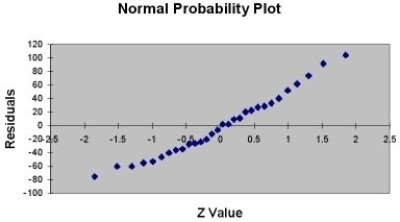TABLE 13- 11
A company that has the distribution rights to home video sales of previously released movies would like to use the box office gross (in millions of dollars) to estimate the number of units (in thousands of units) that it can expect to sell. Following is the output from a simple linear regression along with the residual plot and normal probability plot obtained from a data set of 30 different movie titles:
ANOVA


-Referring to Table 13-11, which of the following is the correct interpretation for the slope coefficient?
Definitions:
Encumbrance
A claim against a property by a party that is not the owner, often impacting the property’s use or transfer until the encumbrance is lifted.
Eligibility Requirements
Criteria that must be met in order to qualify for a specific program, service, or status.
Nonexchange Transactions
Transactions where an entity receives value without directly giving or promising equivalent value in exchange.
Reimbursement
Compensation paid to someone for out-of-pocket expenses they have incurred.
Q11: Referring to Table 15-4, given a
Q24: Referring to Table 13-4, _% of the
Q55: Referring to Table 12-5, the company tests
Q143: Referring to Table 14-7, the department head
Q166: In a one-way ANOVA, the null hypothesis
Q166: Referring to Table 13-8, what is the
Q179: Referring to Table 12-5, what is the
Q196: Referring to Table 12-6, the null hypothesis
Q203: Referring to Table 14-5, what is the
Q225: Referring to Table 14-17, there is not